
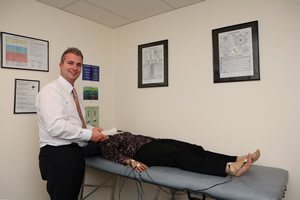
Discover the missing pieces to your ongoing health and wellbeing.
How do I achieve Vitality, Longevity and Healthy Ageing (VLA)?
Hamish Everard Natural Therapies is one of a small group of Healthcare Professionals who have received extensive training in Vitality, Longeviity and Healthy Ageing making us well equipped to help you achieve your health goals. VLA is a system that gives us all the tools we need to help YOU maximize your ongoing health and Wellbeing. It includes a scientifically validated test known as Bioimpedance Analysis (BIA). This test interprets your results and records your progress, plus the VLA program offers a range of Naturopathic protocols and exercise to have you looking and feeling at your best.
What is Bioimpedance Analysis (BIA)?
BIA is a science that was originally developed for the use in monitoring hospital patients after surgery. It has also been used in a number of space missions to monitor astronaut’s health here on earth and also in space. We simply connect leads to your hands and feet, passing a small current through your body. This is a painless and non invasive procedure which provides information on several of your body’s biomarkers.
What do Biomarkers tell you about your health?
Biomarkers are parameters that measure an aspect of your health. They allow us to monitor your energy levels, toxicity, inflammation, fluid balance, fat, muscle, dietary requirements and response to treatment. No other test provides all of this information so quickly and easily.
What BIA can measure?
- Muscle strength
- Lean body mass
- Basal metabolic rate
- Body fat percentage
- Body fat distribution
- Bone mineral density
- Biological and metabolic Age (How are you really ageing?)
- Cellular energy levels
- Hydration (Body fluid distribution)
- Exact protein, carbohydrate and fat requirements in your diet
Who is the VLA program for?
The main people to benefit from this program are people who want to:
- Manage their weight
- Increase muscle tone and fitness
- Improve their energy
- age healthily
- manage toxicity levels
What will I receive?
We will perform a quick test, and then enter your results into a computer. You will then be given a computerized analysis of your health, including your key biomarkers, and we will discuss a strategy for health improvement. Overtime your results can be compared, so that you can have a clear idea of your progress and how the naturopathic medication and dietary modification is having a beneficial effect on your health and total wellbeing.
NOTE: This program is included in the cost of your normal Naturopathic Consultation.

Hair mineral analysis (HMA) is a safe, non-invasive test that measures the levels of nutrients and toxic metals found in hair. Hair mineral analysis can detect whether there is an excess or deficiency of vital nutrient minerals such as calcium, potassium, zinc and iron. It can also identify over-exposure to toxic metals such as aluminum, lead, arsenic and mercury. HMA is an invaluable screening tool in both every day and preventive health care.
This test provides a reading of the minerals deposited in the cells and interstitial spaces of the hair over a 2-3 month period. It does not provide an assessment of the mineral content of other tissues of the body. However, testing the hair can allow one to infer what is occurring in other tissues.
Minerals and Toxic Metals Tested
The HMA measures essential nutrients, toxic metals and trace minerals such as:
- Macro minerals – Calcium, Magnesium, Phosphorus, Potassium and Sodium
- Trace minerals – Chromium, Copper, Iron, Manganese, Selenium, Silicon and Zinc
- Toxic metals – Aluminum, Arsenic, Cadmium, Lead, Mercury and Nickel

Often our patients complain that their standard blood pathology results are in the general range, however the patient is experiencing debilitating symptoms that are affecting the way they live their lives. We interpret your blood results differently. We look at things more from a function point of view. This means that we look further into why your body may not be functioning at it’s best.
We use a cholestech machine that is as accurate as those used in pathology labs. We test for total cholesterol, HDL/LDL ratios, liver enzymes, hCRPHave you ever received your blood tests back from your doctor only to be advised that all is ok, but yet you are feeling terrible? This is the dilemma thousands of Australians experience every day.
At Optimal Health Solutions Wellbeing Centre your Naturopath looks at your blood test results with different eyes and is able to pinpoint any health imbalances which are fully explained to you. Using a sample of blood from your finger tip, our sophisticated Roche Diagnostic blood lab, testing is equal to that performed by your local pathology lab. Over 20 tests will be done, finding out some important blood chemistries like Glucose, Pancreatic Enzymes, Cholesterol, HDL/LDL ratios, Liver function and more.
From here your Naturopath can develop a winning strategy that work’s best with your body’s design to restore balance and therefore improve functioning and help to rejuvenate your health.
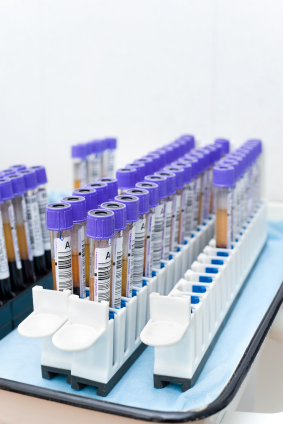
The ABO blood group of an individual is determined by testing red blood cells for the presence of the A and/or B antigen with commercial antisera. The presence of the antigen(s) is indicated by agglutination of the blood upon exposure to the antiserum.
The Metagenics Blood Typing Test kit applies this principle through two reagents (Anti-A and Anti-B) which enable professional Healthcare Practitioners to quickly, accurately and conveniently determine a patient’s ABO blood type. The results are available in one minute.
Blood Types and Human Evolultion
Over the thousands of years of human evolution, four types of blood have developed. These apparently parallel the migrations and processes of civilisation in human society. The original human blood type of our hunter-gatherer ancestors, known as the ‘O’ type can be traced back over 40,000 years. The next type to appear was the ‘A’ type, which seems to accompany the rise of agricultural societies in the middle east around 20,000 years ago. Five to ten thousand years later, in the Himalayan highlands, the nomadic herders arose, and with them appears the ‘B’ type. Finally, only 1000 years ago, the ‘AB’ type became evident as a result of the tumultuous racial mixing that occurred with the many invasions of that time.
Your Blood Type Determines How Your Body Reacts to the Foods You Eat
What makes this all clinically relevant, is the existence of lectins – abundant and diverse proteins found in the majority of foods. Lectins are surface markers that aid inter-cellular adhesion. For instance, they help bacteria adhere to cell surfaces to facilitate infection and they enable our immune systems to identify and destroy those same organisms. And lectins can react with blood type agglutinogens.
Depending on which lectins a food contains, some foods may be harmful to a person’s physiology, others will be neutral, and yet others may actually be beneficial. This is the basis of the Blood Type Diet, developed by Dr Peter D’Adamo.
Please note this test is not to be used to determine blood type for transfusion or for the Rh group.

Assessing zinc status can be difficult, as most of the body’s zinc stores are in the bones. Hair analysis, levels in sweat, blood serum or white blood cells all require considerable (and costly) laboratory work. Zinc Taste Test provides a quick and reliable clinical test for the assessment of zinc status.
Studies have demonstrated this test to be reliable and reproducible. It provides patients with a simple and inexpensive screening method for determining the need for zinc. By using the oral Zinc Taste Test to determine the need for zinc, and retesting after 30 days of supplementation, one can not only determine zinc requirements, but also monitor the patient to be sure they are properly absorbing their zinc.
Numerous research studies have found that sub-optimal levels of zinc are very common at all ages, especially in the elderly. An Australian study found that 85% of women and 65% of men do not receive the RDA for zinc in their diets.

The Complete Digestive Stool Analysis (CDSA) is an advanced non-invasive diagnostic tool that can help our practitioners improve prevention and target treatment strategies for gastrointestinal disorders. This functional test evaluates digestion and absorption, bacterial balance and metabolism, yeast and immune status. Test parameters include digestion/absorption, gut immunology, metabolic, microbiology (bacteriology and yeast culture), parasitology among others.
Symptoms such as constipation, diarrhoea, flatulence, bloating, abdominal discomfort and bad breath are all indicative of poor gut function.
In addition to providing a comprehensive evaluation of gut microbial ecology and digestive function, The CDSA offers expanded diagnostic capability for our practitioners to:
- Distinguish definitely between chronic functional digestive disorders like irritable bowel syndrome and organic diseases such as inflammatory bowel disease.
- Utilise the most sensitive markers for non-invasive risk assessment of colorectal cancer.
- Evaluate pancreatic digestive enzyme output without interference from digestive supplements, changes in stool transit time, or marker variability.
- Improve speed and accuracy in monitoring eradictation therapy for H. Pylori, the causal bacterium in peptic ulcer disease.
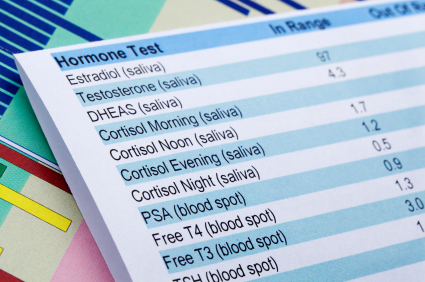
Our clinical experience has shown that our patient’s symptoms are most likely related to bio-available levels of hormones than to total levels. Unless you order the more complicated (and expensive) equilibrium dialysis determinations of “free” and albumin-bound hormone in serum (blood) you won’t get the information required from a standard reference laboratory. Even then, chances are you can’t collect enough samples to get the complete picture of the circadian and periodic hormone patterns that are critical to proper diagnosis, treatment and monitoring.
Salivary hormonal testing gives you accurate information about bio-available hormone levels. The collection is simple, it can be performed at any time, anywhere, and there is no need to draw blood.
Adequate levels and an appropriate balance of the steroid hormones (Estrone, Estradiol, Estriol, Progesterone, Testosterone, DHEA, DHT, Cortisol, Androstenedione, Melatonin) are necessary for maintaining optimal health and wellbeing in both females and males. These hormones are essential for the physiological functions including blood lipid balance, bone mineral density, fertility, sexuality, brain function and wellbeing.

The majority of adverse reactions to food are rarely life threatening, but may be a source of considerable discomfort in many chronic conditions and diseases. The symptoms are varied and individuals can react in different ways. Many people live with minor or major symptoms of adverse food reactions for years without ever suspecting the involvement of the immune system and the foods which trigger them.
Food sensitivity reactions may be the result of enzyme deficiency, histamine releasing effects, altered intestinal permeabililty (e.g. leaky gut) or pharmacological effects.
Food sensitivity is often given a low priority in the investigation of disease. Common conditions where food sensitivity may play a significant role include bloating and fluid retention, inflammatory bowel disease, irritable bowel syndrome, migraine, depression and mood swings, asthma, skin conditions and behavioural problems in children.
Although we use electro-dermal testing for food sensitivities in our clinic we also offer blood testing for multiple foods.
IgG Food Sensitivity testing interpreted in relation to a case history and other test results, is an efficient and reliable method for diagnosing individuals with adverse reactions to food.
Food allergy, on the other hand, is an immunological adverse reaction to food which is often IgE-mediated and can be measured in most instances in blood by detection of specific antibodies. Food sensitivity is identified by screening blood samples for IgG antibodies to a panel of foods. The most common food sensitivities occur with cow’s milk, eggs, beans, nuts and cereals.
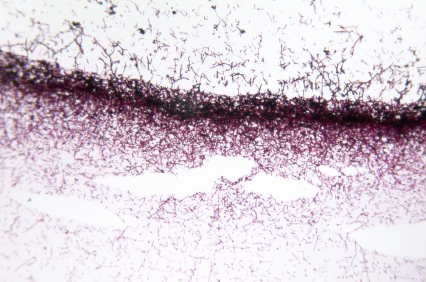
The saliva and stool test for Candida Albicans is more accurate than the on the spot blood test. Saliva and stool tests provide you with the degree and level of infection. On the spot blood Candida tests in our clinical experience has often produced false negatives.
The Functional Liver Detoxification Profile (FLDP) challenges the liver’s Phase I and Phase II detoxification capacity with low doses of Caffeine, Aspirin and Paracetamol. Saliva and urine specimens, collected at timed intervals, are then analysed for metabolites of the three compounds to determine the efficiency of the liver in their conversion and clearance from the body.
Phase I reactions utilise the Cytochrome P450 mixed function oxidase (MFO) enzymes. The primary function of these enzymes is to oxidise endogenous and exogenous chemicals for excretion. This provides a mechanism of protection from a wide variety of toxins. Phase I is followed by an intermediate phase where oxygen-free radicals may be generated in substantial quantities, which in some instances may change harmless compounds into potentially toxic substances.
Phase II reactions involve the addition of a small polar molecule to the substance, a conjugation step that may or may not be preceded by Phase I. Several types of conjugation reactions occur in the body, including glutathionation, sulphation, glucuronidation and glycination. The results of an FLDP will support accurate identification of the individual’s detoxification profile and assist in the direction of treatment. The FLDP may particularly provide valuable information in the management of patients who suffer from food allergies, multiple chemical sensitivities, chronic fatigue syndrome, “leaky gut” and hormonal imbalance eg. premenstrual syndrome and menopausal symptoms.
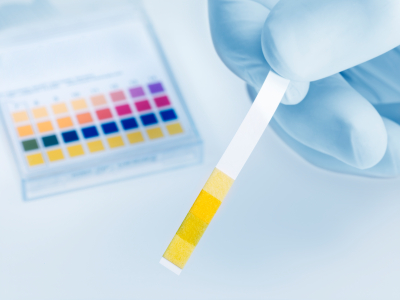
The urinary indicant test is an accurate test for measuring the level of dysbiosis in the bowels. Dysbiosis is the bad bacteria in the bowels. These bacteria release certain proteins which allows us to test for these in the urine. If the test is positive it suggests gastrointestinal toxicity as a result of protein putrification.
The causes of Toxic Bowel Syndrome are as follows:
- High sugar diets
- Drugs and recreational substances
- Poor protein digestion
- Antibiotic use.
- Candida Albicans
- Autoimmune disease
- Food sensitivities and allergies
- Nutritional deficiencies
URINARY pH – Why is urinary pH important?
Subtle changes to the pH of the body can have substantial impacts on a range of health conditions, including stress, bone density, pain, muscle mass and hormonal balance. Urinary pH is a good measure of the ‘acid-load’ within the body, and many Practitioners use urinary pH to tailor their treatment plans. Urinary pH ranges from 4.5 to 8.0 in extreme cases, and from 5.5 to 6.5 in the average patient.

The thyroid’s role is to maintain the body’s regulatory functions thus affecting our bodies at the cellular level. Cellular energy decline is inevitable due to the ageing process, stress, and environmental toxins happening daily in our lives. Thyroid dysfunction can negatively affect the neurological, heart, skeletal muscle, kidneys, and hormone-producing tissues in our bodies.
Research has documented that 80% of the population has some level of thyroid dysfunction; therefore, thyroid function screening test is very important for everyone. The standard blood test used to check for proper thyroid function is a good tool to establish a baseline thyroid function, but it can be painful, costly and often be misleading in cases of ongoing treatment of patients with sub-clinical hypothyroidism.
The Thyroflex offers a pain-free and cost effective way of measuring the thyroid function with a simple reflex test. The Thyroflex technology is currently the only non-invasive tool available to measure thyroid function at its cellular level with an accuracy of over 95%.
Do you suffer from any of the following symptoms?
- Tired and sluggish
- Dry hair and skin
- Need for more sleep
- Weak muscles
- Constant feeling cold
- Muscle cramps
- Poor memory
- Depressed
- Slow thinking
- Puffy eyes
- Difficulty with math
- Hoarser/deeper voice
- Muscle /joint pain
- Constipation
- Coarse hair or hair loss
- Low sex drive/impotence
- Puffy hands and feet
- Unsteady gait
- Gain weight easily
- Thinning outer eyebrow
- Menses more irregular
- Heavier menses
OR
- Tachycardia (Rapid Heart Beat)
- Palpitation (Skipping of Heart Beat)
- Insomnia
- Shakiness
- Increased Sweating
- Brittle Nails
- Loss of Appetite
If so, call us now to arrange an appointment with our practitioners to discuss whether or not you may benefit from a Thyroflex Test.
Testing takes approximately 15 minutes to administer, with the results provided immediately. Your Thyroflex results will then help our practitioners to determine the appropriate treatment, natural medicine, or nutritional advice that would be best suited to improve your thyroid function and overall health and vitality.
Electrodermal screening is a non-invasive tool which involves a sensor touching an acupuncture point on the hand. Hamish utilises the tool’s energies of homoeopathic vials related to various organs, toxins, systems and emotional issues to allow him to determine imbalances of vitamin and mineral inadequacies and toxicities in the body.
Bio-Energetic screening looks at the impedance and reactive capacitance of the bodies energy fields to help identify health imbalances.
